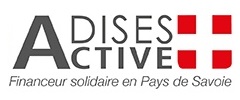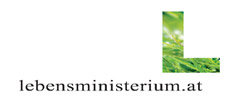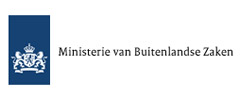NGOsí chemical blacklist shunned by toymakers
As negotiations continue on revisions to the EU toy safety Directive, European consumer groups are trying to educate parents about the potential risks of chemicals in toys.
14.12.2008 |ENDS report December
As negotiations continue on revisions to the EU toy safety Directive, European consumer groups are trying to educate parents about the potential risks of chemicals in toys. But toymakers insist the EUís chemical regime REACH is the best vehicle to deal with chemical risks.
European consumer groups will launch a campaign next year to encourage parents to challenge toymakers over chemicals in products. The move coincides with a revision of the toy safety Directive which is working its way through the European Parliament.1 In the past, lobbying against toymakers has focused on chemicals such as phthalates, six of which are now banned in some EU toys (ENDS Report 357, p 50 ). But the focus is broadening as a result of the EUís new chemicals regime REACH and a revision of the 20-year-old toy safety Directive.
In September, European NGOs, led by ChemSec, published a list of 267 substances of very high concern (SVHCs) which they want firms to remove from products (ENDS Report 405, pp 24-25 ). Women in Europe for a Common Future (WECF) and ChemSec have identified 13 chemicals on the list that could be in toys.
WECF is preparing a pocket guide showing which chemicals are likely to be in seven types of toys. It wants consumers to pressure toymakers and retailers to reveal which chemicals are in their products and adopt policies based on the precautionary principle to phase them out.
"Harmful substances in toys are a scandal," said Sonja Haider, coordinator of WECFís chemical group. "At the moment it is almost impossible for parents to know whether products contain hazardous chemicals."
The substances being targeted are aniline, brominated flame retardants, bisphenol-A, chlorinated paraffins, formaldehyde, nonylphenol ethoxylate, PFOA/PFOS, triclosan, phthalates, cadmium, chromium, lead and organotin compounds.
According to the NGOs the substances fulfil the criteria for SVHCs in the REACH regulations, because they are: carcinogenic, mutagenic and toxic for reproduction (CMR); persistent, bioaccumulative and toxic; very persistent and very bioaccumulative; or of an equivalent level of concern.
"Many common ingredients in toys are SVHCs," said Jerker Lighart, a project coordinator at ChemSec, adding that evidence was growing that these chemicals can affect brain development and hormonal and reproductive systems.
But few toymakers contacted by ENDS, apart from Lego, were willing to say whether their products contained substances targeted by the NGOs.
Lego said none of its products contained the chemicals to the best of its knowledge and that its policy supported a "continuous process of integrating the precautionary approach" into its work.
A statement added: "We have done our utmost to be at the forefront when it comes to safety in relation to chemicals."
The company claims to have followed "the most stringent requirements" and said all its plastics complied with food packaging requirements to ensure "no chemicals migrate out of plastic".
Mothercare, Disney and Mattel refused to say whether the chemicals were in their products. All issued statements saying they complied with existing requirements. Mothercare also said it has "introduced restrictions in advance of legal requirements wherever possible" but refused to make its chemical strategy public. Toys R Us and Hasbro did not respond to ENDSí inquiries.
"Too many companies havenít got a policy beyond legal requirements and are still producing toys which pose a health threat to children," said Ms Haider. "Our vision is that the toy industry applies the precautionary principle and eliminates hazardous substances from the beginning."
The British Toy and Hobby Association, representing Britainís toymakers, claimed child safety "is the toy industryís top priority". But in a statement its director general Roland Earl rejected the ChemSesaying it "wishes to avoid confusion with consumers and throughout industry that may undermine the unified approach set out under the REACH regulation".
But it will take at least ten years for REACH to become fully operational, the European Commission has acknowledged. In a summary impact assessment accompanying the revised draft of the toy safety Directive, it also notes that unless a substance in a product is intended to be released, "substances in imported toys normally do not have to be registered, with the exception of the CMRs included in the candidate list" for authorisation.2
For this reason, the Commission has decided to widen the scope of the restrictions on CMRs as part of its revision. Under the proposals which look set to gain first-reading approval in January, heavy metals such as arsenic, cadmium, chromium (VI), lead and mercury would be banned in toys. CMRs would be allowed only in concentrations below 0.1%, although exemptions are proposed if no substitute exists. But CMRs would still be allowed in the inner workings of toys.
This does not go far enough for NGOs. They argue that other hazardous chemicals need to be banned from toys and CMRs removed completely.
"With a specifically vulnerable target group, toddlers, infants and children, toymakers have every reason to be extremely vigilant when making choices about the content of their products," said Jerker Lighart. "It is therefore very disappointing that toy producers do not have full control of the chemicals they use in their toys." The ChemSec list could, he maintained, help firms make informed decisions about which high concern chemicals to phase out or avoid.
Related News
Meet the Winners of the Gender Just Climate Solutions Award at COP24
On the 70th anniversary of the Universal Declaration of Human Rights, we awarded Gender Just Climate Solutions Winners at the climate negotiations in Katowice, Poland
11.12.2018
Invitation: Gender Just Climate Solutions Award 2018
10 December, COP24 Katowice
04.12.2018
Getting to the Future We Want
4-7 November, Brussels: European Environmental Bureauís (EEB) Annual Conference
12.11.2018
GoodFood4All
WECF and partners all over Europe start GoodFood4All Campaign
06.11.2018
#Ruralwomen: join our Women2030 campaign!
15.10.2018







































